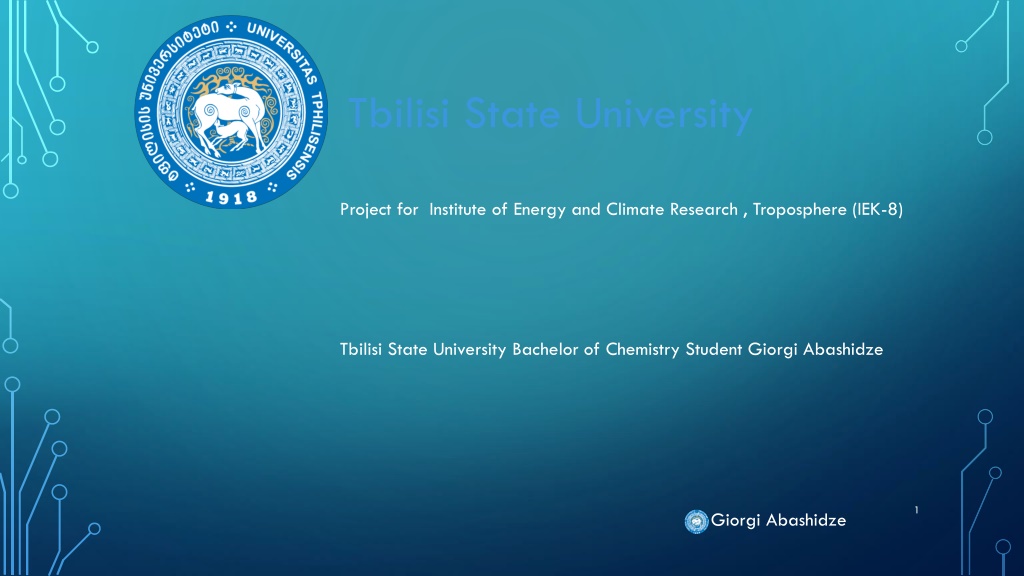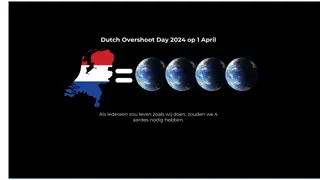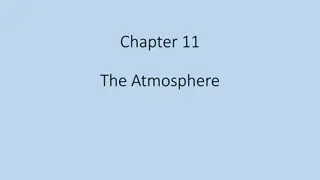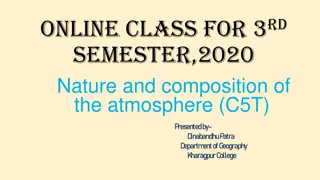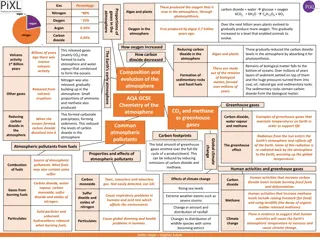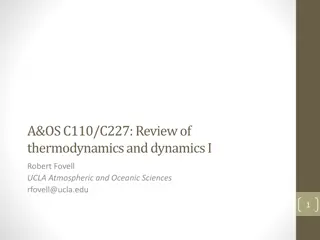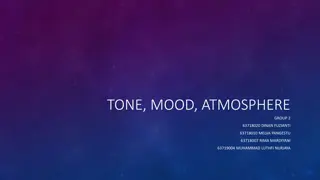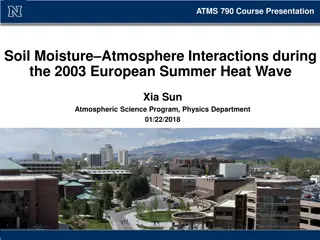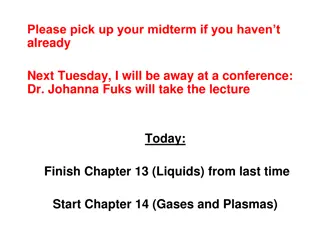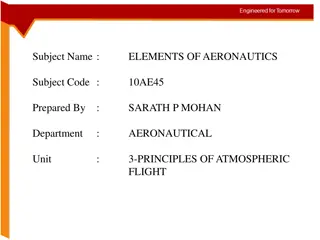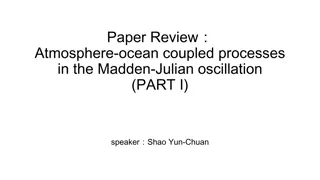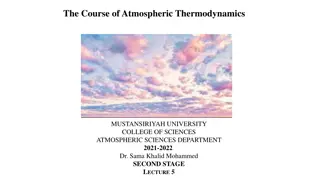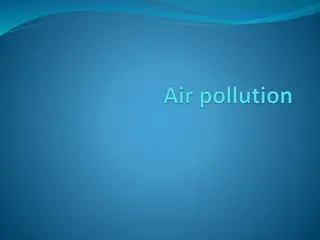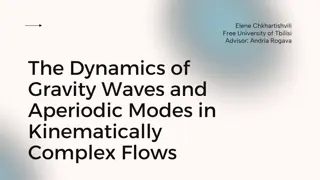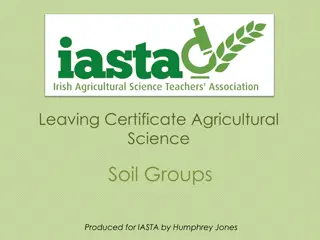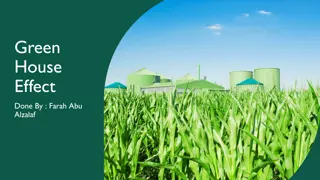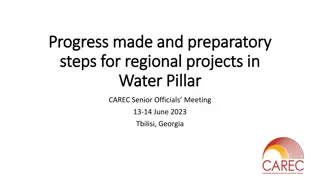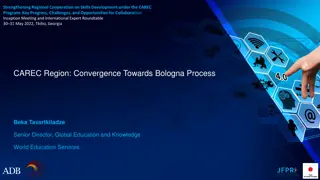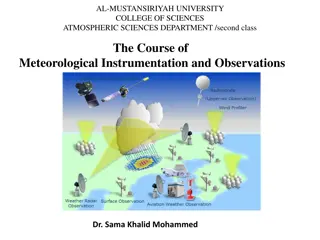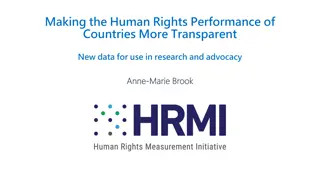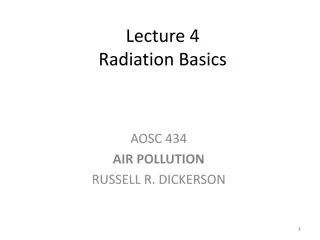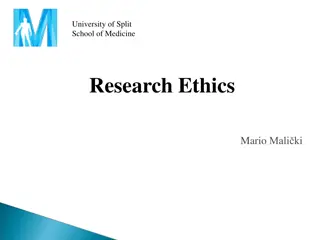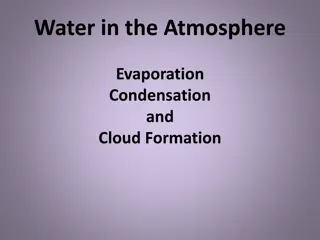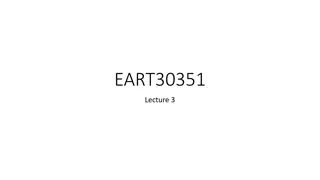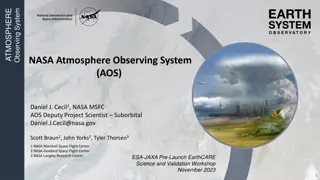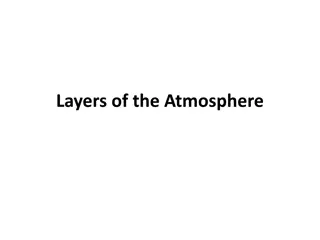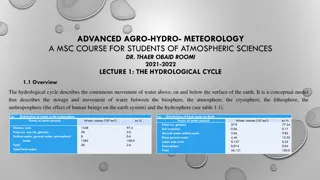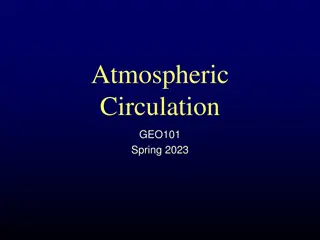Understanding Earth's Atmosphere and Human Impact: Research at Tbilisi State University
Earth's atmosphere is a complex system vital for life, with layers like the troposphere playing a crucial role. Research at Tbilisi State University delves into atmospheric composition, structure, and the impact of human activities on air quality. Explore the troposphere, types of air pollution, and major outdoor pollution sources to deepen your understanding of this critical environmental issue.
Uploaded on Oct 04, 2024 | 0 Views
Download Presentation

Please find below an Image/Link to download the presentation.
The content on the website is provided AS IS for your information and personal use only. It may not be sold, licensed, or shared on other websites without obtaining consent from the author. Download presentation by click this link. If you encounter any issues during the download, it is possible that the publisher has removed the file from their server.
E N D
Presentation Transcript
Tbilisi State University Project for Institute of Energy and Climate Research , Troposphere (IEK-8) Tbilisi State University Bachelor of Chemistry Student Giorgi Abashidze 1 Giorgi Abashidze
TROPOSPHERE AND ANTHROPOGENIC EFFECTS GENERAL KNOWLEDGE TRACE GASES RESEARCH 2
STRUCTURE OF ATMOSPHERE WHAT IS ATMOSPHERE ? The atmosphere of Earth is the layer of gases, commonly known as air, retained by Earth s gravity, surrounding the planet Earth and forming its planetary atmosphere. 0.946 0.041360.001818 0.000524 0.000187 0.000114 Nitrogen Oxygen Argon Carbon dioxide Neon Helium Methane krypton 20.946 78.084 atmosphere Source from NASA 3
LAYERS OF ATMOSPHERE Air pressure and density decrease with altitude in the atmosphere. However, temperature has a more complicated profile with altitude and may remain relatively constant or even increase with altitude in some regions (see the temperature section, below). Because the general pattern of the temperature/altitude profile, or lapse rate, is constant and measurable by means of instrumented Balloon soundings, www.worldatlas.com 4
TROPOSPHERE Troposphere Place of pollution The troposphere is the lowest layer of Earth's atmosphere. It extends from Earth's surface to an average height of about 12 km (7.5 mi; 39,000 ft), although this altitude varies from about 9 km (5.6 mi; 30,000 ft) at the geographical poles to 17 km (11 mi; 56,000 ft) at the Equator, with some variation due to weather. The troposphere is bounded above by the tropopause, a boundary marked in most places by a temperature invesion (i.e. a layer of relatively warm air above a colder one), and in others by a zone which is isothermal with heigh 5
TYPES OF AIR POLLUTION mobile sources such as cars, buses, planes, trucks, and trains www.nps.gov stationary sources such as power plants, oil refineries, industrial facilities, and factories area sources such as agricultural areas, cities, and wood burning fireplaces natural sources such as wind-blown dust, wildfires, and volcanoes 6
HUMAN ACTIVITIES THAT ARE MAJOR SOURCES OF OUTDOOR AIR POLLUTION, INCLUDE: Fuel combustion from motor vehicles Heat and power Industrial facilities Municipal and agricultural waste sites and waste incineration/burning Residential cooking, heating, and lighting with polluting fuels 7
POLLUTION OF CARS The ingredients of air pollution www.ucsusa.org Emission from heavy duty vehicle Electric vehicles (EV) Zero-emission 8 Nissan leaf Tesla model 3
TRACE GASES Ozone: column (total) ozone and ozone vertical profiles with a focus on the stratosphere and upper troposphere; Greenhouse gases: carbon dioxide CO2 (including 14C, 13C and 18O in CO2, and O2/N2 ratios), methane CH4 nitrous oxide N2O, halogenated compounds SF6; Reactive gases: surface and tropospheric ozone, carbon monoxide (CO), Volatile Organic Compounds (VOCs), nitrogen oxides (NOx), sulphur dioxide (SO2) and molecular hydrogen (H2); Atmospheric Wet Deposition (focused largely on major ions); UV Radiation; Aerosols (including physical properties, size distribution and chemical composition). 9
COMMON METHODS USED FOR ATMOSPHERE RESEARCH Weather balloon Example of satellite observation Satellite observation 10
WEATHER BALLOON A weather balloon also known as sounding balloon is a balloon (specifically a type of high-altitude balloon) that carries instruments aloft to send back information on atmospheric pressure, temperature, humidity and wind speed by means of a small, expendable measuring device called a radiosonde. Source united States Navy 11
ADVANTAGES OF SATELLITE OBSERVATION The capability of satellite instruments to measure the tropospheric pollution first became apparent by measurements of GOME on NO2 ( 2001) and MOPITT on CO (2004). These instruments enabled for the first time global measurements of pollutants in the troposphere in the form of maps of monthly or yearly averaged concentrations. Up to that point, only models provided such information 12
Thank you for your attention Giorgi Abashidze
